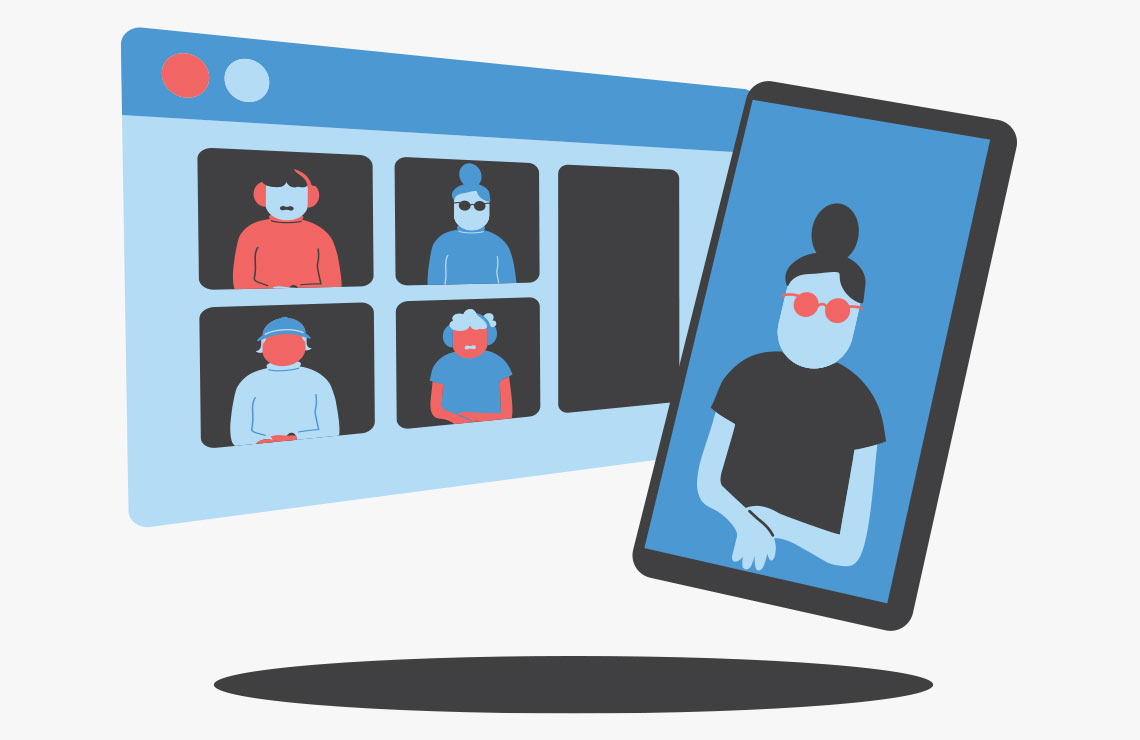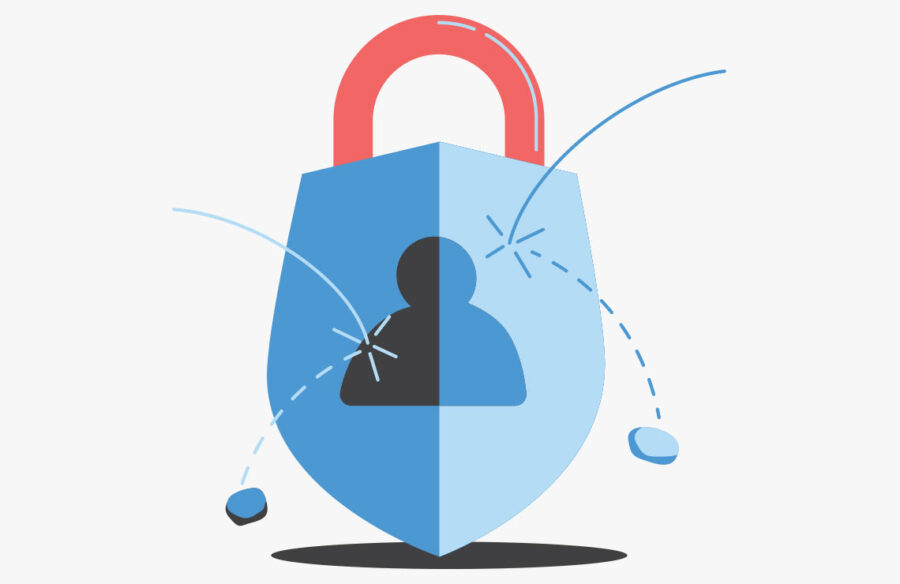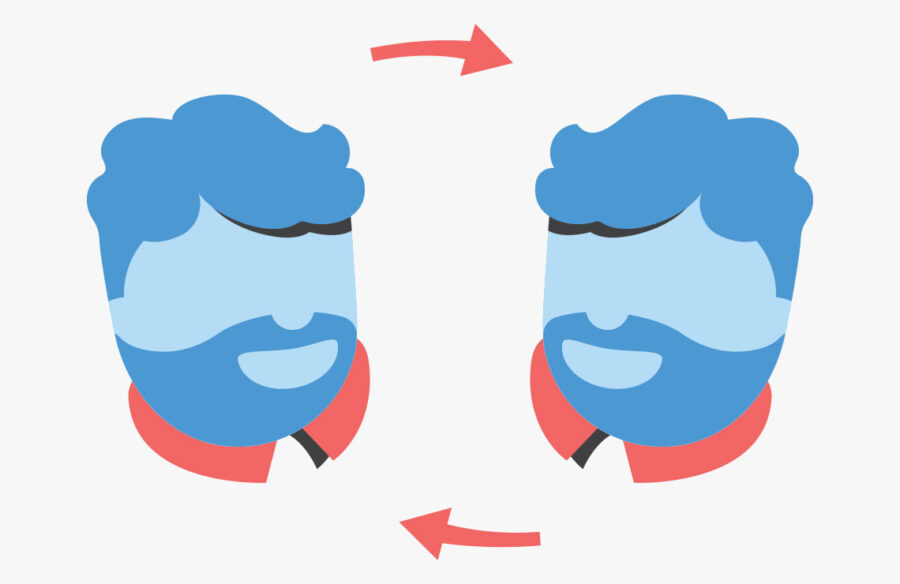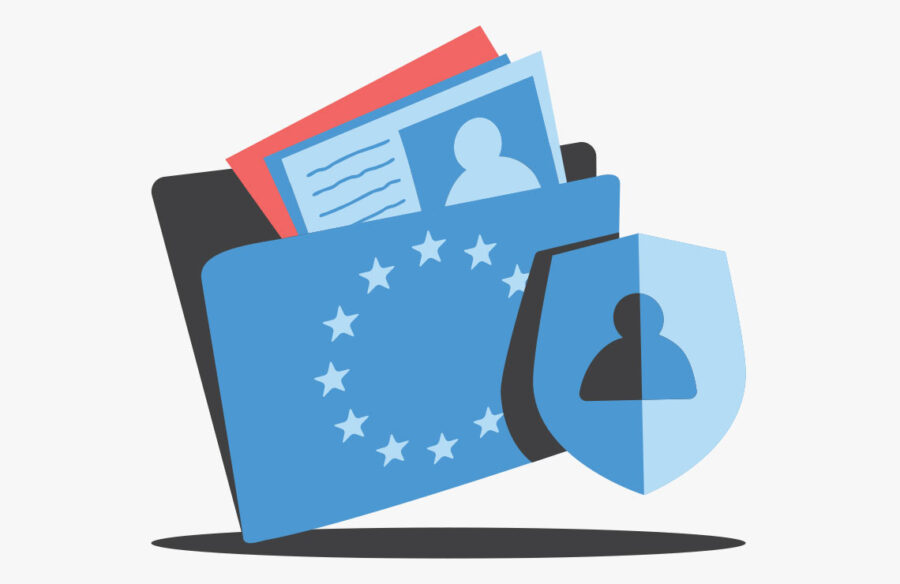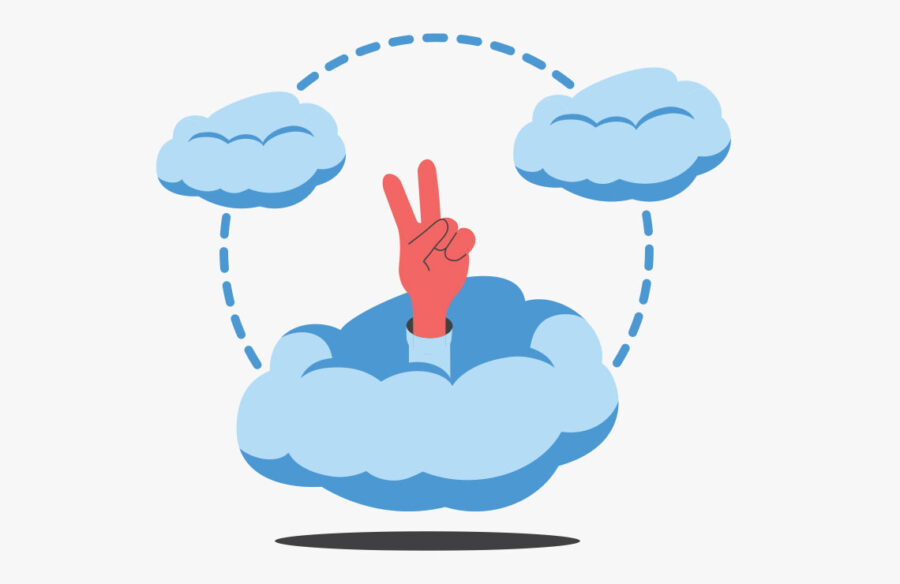People Trends in short

Remote work is here to stay, which will effect most things connected to our jobs.
People trends in short
Remote work is here to stay, which will effect most things connected to our jobs.
Remote work and remote hubs
Offering wider remote work is a growing internal and external demand. Schibsted is testing a hybrid workplace and is exploring alternatives. We also believe that we can establish more workplace hubs that are located outside the big cities. These hubs could be close to universities and offer jobs or assignments to talent that does not want a fully remote setup or a full relocation.
Flexibility
The need to work remotely was largely born out of the pandemic, and once employees all over the world understood the benefits of a more flexible work-life balance, there would be no going back. Going forward, flexibility will be a prerequisite for companies – and the ones who can’t offer it will likely jeopardize losing their talent.
Diversity
The possibilities for diversity also increase with remote work as companies will be able to hire talent from anywhere in the world, without the need to come to the office. That means there will be greater opportunities to hire people with disabilities and people working in less urban areas.
Cloud Comms
Collaboration will take place online, and that means we’ll be requiring better and more agile cloud communication tools. Not only for storage of data but for working together seamlessly from a distance.
Urban planning
Currently, our urban planning was made for giant office buildings with constant wifi-use. As more people start working from the suburbs, offices will likely become smaller and internet connections will have to be built stronger in more remote areas.
Fewer meetings
Zoom fatigue grew strong during the pandemic and many places of work have realised that meetings need to have a clear purpose. Going forward, we will likely have fewer face-to-face meetings online and more asynchronous communication like email, collaborative documents and tools like Slack.
Better policies
Working hours have increased as more people work from home. While some have had a great experience with flexible hours, there will be a need for better policies tracking that people don’t overextend themselves. Some such policies could extend to time-tracking software, although many employees believe this would lower morale.
Gen Z
Generation Z will further develop the remote workforce, as they are even more tech-savvy than the millennials. Gen Z also has more expectations regarding growth in the workplace and they will likely have different priorities than previous generations. Research suggests they expect flexible schedules and opportunities to learn new skills on the job.
More specialists
When it comes to remote versus on-site talent, it’s likely that more people working remotely will specialise in a certain field, as it would lead to more opportunities and higher pay. Research also suggests that generalists will be preferred on-site talent, but is likely to be paid less as they are more easily replaced.
More security
Cybersecurity will take a bigger place in our working lives. For remote and hybrid models to work, secure data infrastructure is more important than ever. Companies will likely be investing a larger portion of their budget into reliable IT security assisted by machine learning to learn how hackers may put their data at risk.
Read more: How Schibsted is waging the war for talent
Tech trends in short
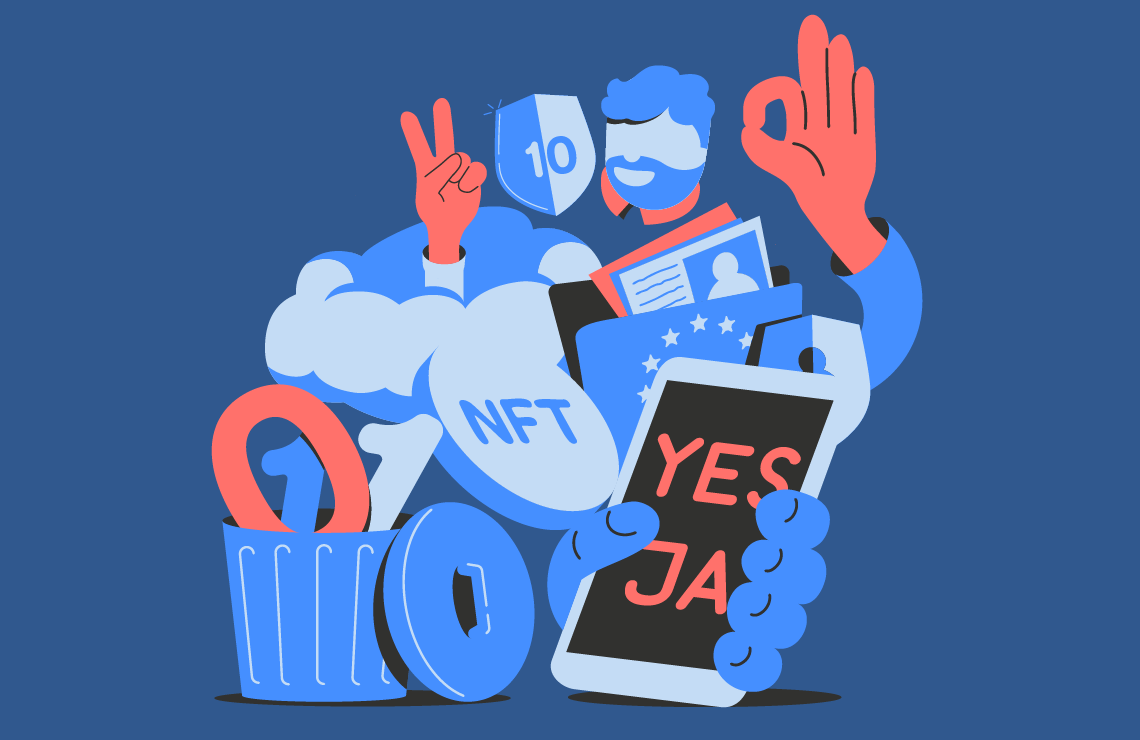
Tech trends in short
Non-fungible tokens, deepfakes and decentralised finance. The future of tech gives us many new opportunities and concepts, but also a sensible need for regulation and structure.
Cyber scores
Just like people and companies have credit scores today, we will likely see the development of cyber scores in the near future. Companies and organisations will be ranked on how they’ve stood up to cyber threats and how secure their data is. In the long run, a good cyber score could be as important as a good credit score.
Deepfakes
Deepfakes are becoming more believable every day and are already being used in both novel and malicious ways. The tech behind deepfakes will become more sophisticated, and wider use of it has the potential to erode trust on social media even further. Here, we believe regulation will be necessary in the not too distant future.
Regulation for tech
We’re already seeing a need for regulation around AI and transparency in tech with proposals like the EU’s Artificial Intelligence Act. Trust is key when it comes to implementing new technologies, and regulation will need to be part of building that trust going forward.
No-code and tech democratisation
The democratisation of tech will continue. The effort to make tech-led innovation as accessible as possible has been ongoing, but the continued investment in AI and the evolution of software-as-a-service companies will strengthen that effort. The increasing need for people skilled in tech has led to an explosion of self-service and “do-it-yourself” solutions. No-code interfaces will
also keep evolving, limiting the need to know code to develop tech services and products.
Artificial Intelligence
Calling AI a trend is an understatement; AI is being adopted as a technology in a vast part of society. One specific field of special interest for Schibsted is within natural language processing. In light of this, Schibsted is currently building a new Norwegian language model, together with other media companies, the Norwegian national library, NTNU and professor Jon Atle Gulla.
Non-fungible token
Non-fungible tokens and virtual assets will keep evolving, especially as Big Tech keeps investing in virtual spaces. As the adoption of NFTs in the art and entertainment spaces increases, more companies will get involved in creating them for profit. We will see an increasing need for expertise around the tokenisation process and requirements in this space.
Cloud solutions
Hand in hand with the democratisation of tech is the continued evolution of cloud solutions. Companies have experienced first-hand during the pandemic how important it is to have cloud infrastructure to be able to not only store and access data remotely, but to work within the cloud as well.
Break them up

Break them up
Will the history of the Gilded Age repeat itself? When Big Tech has gone from good to evil, voices are raised to break the companies up.
Marshall McLuhan dreamt of a global village already in the 1960s, and boy did he get one. It all started out so well – The Internet was a church of connection, education, and democracy and its priests promised not to be evil. At the pinnacle of optimism, in the early 2010s, social media powered the democratic movement of the Arab Spring and Mark Zuckerberg opened up on primetime TV about his home, his relationship and a USD 100 million donation to charity. Today, the naïvety has been replaced with realism. Strong voices argue that we should Break Them Up, and Mark gives interviews in the Senate instead of at Oprah’s. Somewhere along the way left, right and center agreed that Big Tech was no longer a poster child for good, but a force of evil – a manipulator of elections, a dampener of free speech, and a threat to fair competition. Because competition and choice are good. Monopolies are bad. And if they happen anyways, Sherman will save the day.
Late republican senator John Sherman of Ohio that is, and his landmark federal competition law the Sherman Antitrust Act. A law that was passed by a unanimous House of Representatives in 1890 aiming to limit cartels and monopolies, and still today forms the basis for antitrust litigation by the United States government. Sherman himself said the purpose was to protect consumers:
“To protect the consumers by preventing arrangements designed, or which tend, to advance the cost of goods to the consumer.”
-John Sherman, 1890
The historical backdrop of this competition law was the Gilded Age – gold on the outside and something far less illustrious on the inside. Railroad and Oil barons built vast empires with monopolistic tendencies, and when challenged by lawmakers and politicians many deflected and denied the problem and obfuscated the ownership and governance structure of their empires behind complex layers of trusts. There they lay hidden from public view, but as the story goes the young attorney general David Watson in Ohio happened upon Standard Oil’s original trust deed in a book. The preface of the book read:
“This fragment of the great law of corporations is written to throw light upon a dark subject. During the past twelve months certain mysterious combinations of manufacturers in this country, called “Trusts”, have sprung into prominence. They have increased rapidly, and have excited the alarm of thinking men. Their movements and plan of organization are secret, and are known to but few.”
-William Cook, 1888
David Watson, also a Republican, filed for dissolution of Standard Oil under the Sherman Act, challenging another famous John: Standard Oil owner John D. Rockefeller. During the course of the lawsuit, and a sign of the times of the Gilded age, both Standard Oil operators and Republican party henchmen swung into action trying to stop the young Watson. On several occasions Watson was offered bribes, and in no uncertain terms was he reminded that Rockefeller was a significant Party donor.
Watson did not relent, and in 1892 the Ohio Supreme Court ruled that Standard Oil was controlled by the trusts. Standard Oil, like a hydra, rapidly dissolved the trust in a meeting presided by Rockefeller and reformed as a corporation of New Jersey. It was not until almost two decades later that the Sherman Act case of 1911 – Standard Oil Co. of New Jersey v. United States – truly broke up the company.
Have we now come full circle from Sherman and Rockefeller? Former Secretary of State Robert Reich certainly thinks so and blogged about how the combined wealth of Page, Brin, Facebook’s Mark Zuckerberg, and Amazon’s Jeff Bezos surpasses the bottom half of the American population:
“They are the leaders of a second Gilded Age. In this new Gilded Age, we need to respond to them as forcefully as we did to the monopolies of the first Gilded Age and break them up.”
-Robert Reich, 2019
On the center stage of antitrust and regulation stands presidential candidate and senator Elizabeth Warren, hitting the refrain of how Big Tech is stifling competition over the last few years. In early 2019 she turned the volume up to 11, laying out a regulatory plan to break up Big Tech, including Amazon, Google, Apple, and Facebook. Spreading her message, she turned to Facebook to advertise her plan among voters, because where else do you go these days? And in an astonishing turn of events, Senator Warren was first blocked by Facebook, and then received support by Republican senator Ted Cruz.
“First time I’ve ever retweeted @ewarren. But she’s right – Big Tech has way too much power to silence Free Speech. They shouldn’t be censoring Warren, or anybody else. A serious threat to our democracy.”
-Ted Cruz, 2019
Big Tech has historically been seen as supporters of the Democratic party, and senator Cruz’s line of attack, that Facebook is a monopoly of free speech, is perhaps not the same argument as senator Warren is making. But in their call to action, they stand united.
The mighty have fallen before: other notable cases filed under the Sherman Act include the breakup of American Tobacco in 1911 and the breakup of AT&T in 1982. Generally, the antitrust actions versus AT&T are seen among the most successful, first the settlement in 1956 allowing IBM to innovate on the transistor – perhaps laying the foundations of Silicon Valley – and later in 1982 in bringing competition to long distance telephony and innovation to mobile communication. The court ordered a breakup of Microsoft, but after an appeal to the Supreme Court the ruling was postponed.
But the first modern tech company under threat of breakup slipped away in United States v. Microsoft Corp. In 2000 the court first ruled that Microsoft’s behavior was indeed monopolistic and that their business conduct unlawfully attempted to squash competition from Apple, Netscape, Lotus Software, Linux and others. Later in 2000, the court ordered a breakup of Microsoft, but after an appeal to the Supreme Court from Microsoft, the ruling was postponed.
The suit was fought both in the courtroom and in the public arena, with many sides weighing in. One famous instance was the open letter from The Independent Institute published in the New York Times saying that:
“Antitrust is supposed to be about protecting consumers against higher prices and other consequences of monopoly power. […] However, consumers did not ask for these antitrust actions — rival business firms did. […] Increasingly, however, some firms have sought to handicap their rivals’ races by turning to government for protection.”
-The Independent Institute, 1999
Nobel economist Milton Friedman, famous for criticizing government intervention in almost all forms, also weighed in. In 1999 he wrote an essay outlining his belief that the antitrust case against Microsoft risked future technological progress. Is it really in the self-interest of Silicon Valley to set the government on Microsoft, Friedman asked himself.
“When I started in this business, as a believer in competition, I was a great supporter of antitrust laws; I thought enforcing them was one of the few desirable things that the government could do to promote more competition. But as I watched what actually happened, I saw that, instead of promoting competition, antitrust laws tended to do exactly the opposite.”
-Milton Friedman, 1999
Friedman worried, in part, that the human energy and money spent on lawsuits would be better spent on innovation and product development. The computer industry was moving so much faster than the legal process. So, who knew what the shape of the industry would be at the end of the suit? In part, Friedman worried that antitrust very quickly becomes regulation.
This line of criticism was not new, and already in 1967 Alan Greenspan, later to become Chairman of the Federal Reserve, was arguing the Sherman Act’s negative impact on innovation.
“No one will ever know what new products, processes, machines, and cost-saving mergers failed to come into existence, killed by the Sherman Act before they were born.” –
Alan Greenspan, 1967
Despite the publicity disaster for Microsoft executive Bill Gates, the case was famously ended in a settlement without breakup. Ironically, this was partially due to the presiding Judge Jackson himself playing the publicity game and giving interviews. The settlement was notably against the will of nine states, including the state of California, which thought the settlement but a slap on the wrist.
The case was also famous for using professors as expert witnesses from technology and business schools such as MIT and Stanford University. Does the name Stanford ring a bell? Founded by Gilded Age railroad magnate Leland Stanford in 1885 it played an important role in the growth of Silicon Valley. Stanford is the alma mater of Google founders Larry Page and Sergey Brin, LinkedIn founder Reed Hastings, and Tesla founder Elon Musk, and certainly seems at the epicenter of this wave of technology companies.
So, will Big Tech of today run the same Golgotha as Microsoft once did? Is antitrust and breaking up Big Tech now on the bipartisan agenda? Will we soon see a unanimous House of Congress taking the Sherman Act into the digital age? Unlikely perhaps, but the public opinion is without a doubt changing. Antitrust law professor Rebecca Allensworth at Vanderbilt concluded:
“Ten years ago, it was all about being champions of these companies. Now it’s very fashionable to hate on them.”
-Rebecca Allensworth, 2019
Why is the mood changing? On the side of market dominance, Google’s and Facebook’s capture of 70 percent of digital advertising dollars has raised eyebrows. When, in addition, Google and Amazon were caught or suspected of unfairly promoting their own products on top of search and listings, the surprise turned into a deep frown. On the side of privacy, Facebook has had numerous high profile fallouts such as the Cambridge Analytica scandal. And when Facebook executives were caught or suspected of Gilded age style handling of situation, the frown turned into outright anger. And fear. Fear that was amplified and weaponized on the very same social platforms.
“When Facebook users learned last spring that the company had compromised their privacy in its rush to expand, allowing access to the personal information of tens of millions of people to a political data firm linked to President Trump, Facebook sought to deflect blame and mask the extent of the problem.”
-Delay, Deny and Deflect: How Facebook’s Leaders Fought Through Crisis, New York Times, 2018
It is perhaps no surprise that the populist-in-chief has tweeted out his disdain for Amazon and Jeff Bezos.
When a society feels anxious, the regulatory apparatus kicks in. Both because it might be a highly relevant reaction from civil servants, and also because it is a popular and politically motivated response to how voters are feeling. It is perhaps no surprise that the populist-in-chief has tweeted out his disdain for Amazon and Jeff Bezos.
Futurist Amy Webb’s argues that regulation is more important than ever right now on the global arena, with GDPR in EU and that Senator Warren’s bold statements is part of the US election spin-up. The breakup is perhaps unlikely to go through, Amy Webb predicts in her trend report for 2019, but big tech companies will have to divert attention and funds.
In addition to cadres of lawyers and lobbyists hired by Big Tech, the political critics of antitrust and regulation are rapidly mobilizing. The angles of counterattack are partially along the same lines as Friedman and Greenspan, that regulation hampers innovation. And some commentators are claiming that the technical challenge in breaking out Instagram from Facebook are insurmountable, despite being run by some of the world’s smartest and most well-paid engineers.
There is also a new theme: Geopolitics and Chinese tech’s rise to the forefront. Alibaba, Tencent and Baidu are no longer playing second fiddle. Big Tech of the East will surely take advantage if Facebook, Google, and Apple face restrictions or even breakup. Former Google CEO Eric Schmidt is arguing that regulatory bias hurts American consumers and hands China a competitive advantage. Facebook’s COO Sheryl Sandberg is appealing to emotions on CNBC.
“While people are concerned with the size and power of tech companies, there’s also a concern in the United States with the size and power of Chinese companies, and the realization that these companies are not going to be broken up.”
-Sheryl Sandberg, 2019
Another appeal to basic emotions has come from team Break-Them-Up and Tim Berners-Lee, inventor of the World Wide Web. Without blaming Big Tech and the creators of the large platforms, he is still concluding:
“We demonstrated that the Web had failed instead of served humanity, as it was supposed to have done, and failed in many places. [The Web] has ended up producing—with no deliberate action of the people who designed the platform – a large-scale emergent phenomenon which is anti-human.”
-Tim Berners-Lee, 2018
On September 6th, 14 attorneys general launched a bipartisan antitrust investigation of Facebook, prioritizing the mishandling of personal data. On September 9th attorneys general for 50 states announced an antitrust investigation of Google focusing on its dominance in digital advertising.
In the EU “Google and Facebook Got Some Very Unwelcome News” (Bloomberg) when it was announced that Margrethe “Slayer of Big Tech” Vestager will continue as commissioner for antitrust and adds data protection to her portfolio to boot. Anti-human or not, it is clear that regulation and antitrust are rapidly rising to the top of the corporate agenda.

Dan Ouchterlony
SVP Schibsted Financial Services
Years in Schibsted
14
My dream job as a child
Spaceman
Tech has always been the future

Tech has always been the future
I am still a technology optimist, but I have also become a technology realist, writes Sven Størmer Thaulow, Chief Data and Tecnology Officer in Schibsted. His interest in tech was awakened in his early years by his grandmother.
Most of us trace lines back to when we were children in order to better understand the people we have become. I have always been a tech optimist with an eye to how technology can improve our lives in the future. It all started when I was a kid in the 80s.
I first saw a computer in the computer room at the research institute where dad worked. It was a sharply lit room full of large machines with tape wheels moving back and forth. The room was full of noise, the air was dry, and a barely detectable breeze was in the air. There was much optimism about how these machines would be used to find answers to scientific problems which required large amounts of data to be solved, such as finding out how pollution spread in waterways. To an 8-year old boy, this was impressive – and not least thrilling.
Yet, when I think about what influenced me to become a tech optimist, the big machines are not the first thing that comes to mind – it is my grandmother. She lived in a flat in Oslo with grandad, who was a research scientist. Together they often traveled – especially to the US, where they had many friends in academia in Boston.
A lethal device
When grandma came home from the US she always brought new technology with her. I remember the electric bread knife with the two blades going back and forth – an innovative and lethal device (we were instructed to stay clear when Grandma was slicing bread). Then there was the electric jar opener, which – we were told – was developed in collaboration with Nasa. Totally awesome, but sadly not very useful. Yet Grandma was always incredibly optimistic about how technology would develop and what opportunities it would bring. Her unshakeable belief in new technology stayed with her until she died in her 90s.
Yet, technology optimists always meet sceptics. My mother was the sceptic in our family: video (VHS) did not belong under our roof – there was too much violence, with Bruce Lee and chainsaw massacres. No wonder then, that when grandma called from Boston in 1979 and wanted to get a personal computer – the next big thing – for “little Sven” this was flatly denied by my mother. But at least grandma managed to smuggle me in a Merlin, leading my interest in computers to blossom.
Now in 2019, technology optimism has been replaced by technology pessimism: crypto-currency – which was supposed to be a tool for good – has become a tool used by criminals to buy and sell drugs and stolen goods. Genes can be sequenced for USD 1,300, and we have genetic modification technologies we could only have dreamt of back when my grandmother wanted to get me that computer. Artificial intelligence – once considered a possible answer to many of humanity’s great challenges – is now seen by some as a threat.
Our responsibility to be wise
Technology develops constantly. Today, it is not just part of our surroundings – like an electric bread knife or two – but it permeates every aspect of our society and our daily lives. At the same time, legislation is lacking, unclear, or simply difficult for ordinary people to understand. In this landscape, more and more responsibility rests on us as individuals – both at work and at home. It is our responsibility to consider whether it is okay to give away our data or if we (as people who develop technology) want to use data for a certain purpose or not. Not least, it is our responsibility to be wise about using technology where we collect data about people: how do we explain to people in a clear and comprehensible way what their data is being used for? These are issues we must all think about, whether we work with technology or not. Let me give you some examples.
More and more homes are smart. You might not think about it, but if you have installed an alarm in your house that connects to a front door that uses a code and not a key, you are already facing lots of ethical issues. The lock on your door can record when people come and go. Should you use it to see when your spouse leaves or comes home? The technology is there – it is your choice.
You’re working at a genetic laboratory in a hospital. You know the patient whose DNA you are now scanning personally, and discover that there is a relatively high chance she will get an incurable disease in the future. Do you inform her? The technology is there – it is your choice.
You are working at a weapons factory and are developing semi-autonomous weapons. You discover that with facial recognition technology the system can find the targets on its own, and a soldier only has to press a trigger. Is this crossing the line? The technology is there – it is your choice.
You are working in Schibsted and realize that if you tweak the machine learning algorithm you can increase how much time the average user spends at Aftenposten and earn more money. You are concerned about “algorithmic bias” – that you can alter the algorithm to produce content that pushes you closer to an echo chamber. Should you use the algorithm? The technology is there – it is your choice.
Or perhaps you are like me, who has sent a sample to a big company to find out how much percent African, European or Neanderthal you are. Quite fun and not too pricey! But where did that data go? Maybe it can be used to determine your children’s insurance premium in future? The technology is there – it is your choice.
What is important to keep in mind is that the technology itself is not harmful. Whether or not it is harmful is determined by how we choose to use it. I am still a technology optimist, but I have also become a technology realist: everyone must use technology, whether we work in the technology industry or not – but we must be much more mindful of how we use it, and consider the ethical challenges we are faced with.
Technology scepticism is no way to go. I want to be like my grandmother who never ceased to be fascinated by technology. On one of her last days as a 97-year old she streamed National Public Radio and chatted to her old friend in Boston – on her laptop.

Sven Størmer Thaulow
Chief Data and Technology Officer
Years in Schibsted
0.5
My dream job as a child
Inventor
Crooks benefit from privacy protection
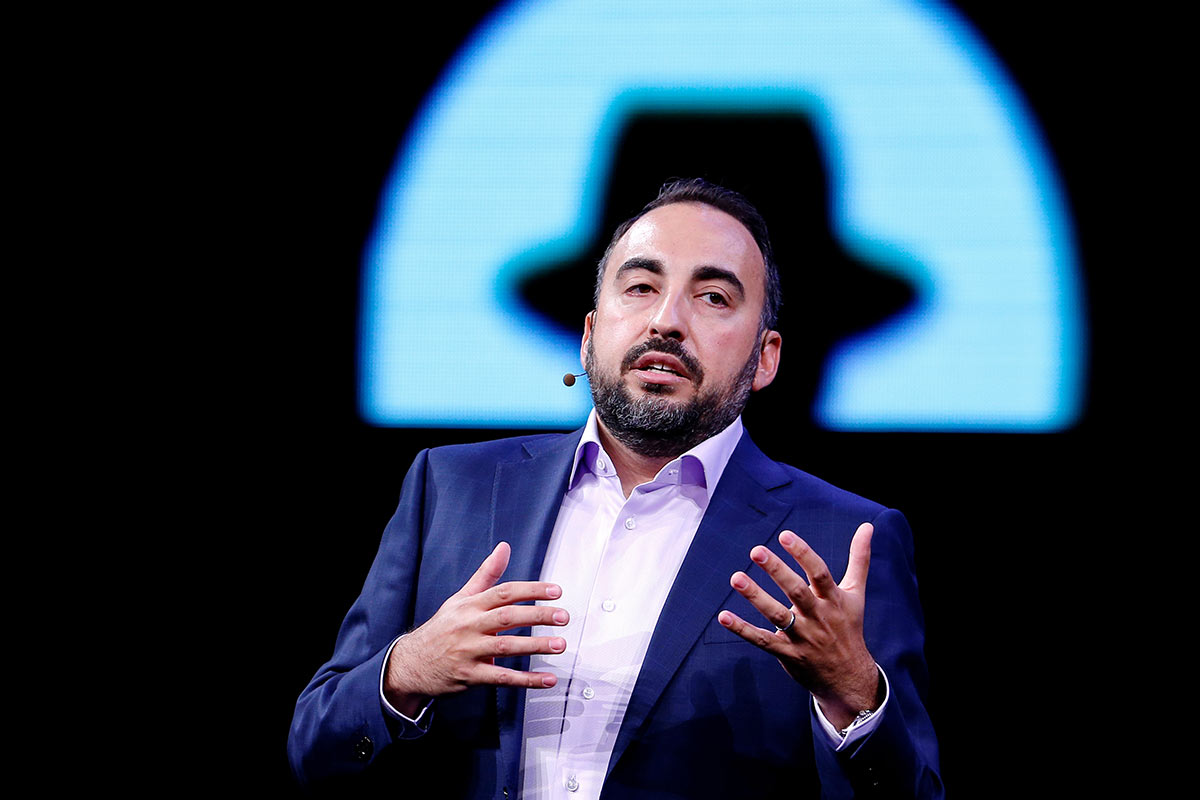
Crooks benefit from privacy protection
Last year Alex Stamos was one of Facebook’s top executives. Now he sits in a rather unimposing office at Stanford University outside San Francisco. Although Facebook’s headquarters in Palo Alto is only a short walk away, the distance between them is long.
“The platforms are delighted about not having to share.” Facebook’s former chief security officer warns against exaggerated privacy protection.
“It’s personal. I don’t talk much about that.”
According to The New York Times, Stamos left after a disagreement with the rest of the executive management over its handling of Russia’s attempts to spread fake news on Facebook. Stamos wanted openness, the others did not. Following a board meeting at which Stamos informed the board about how the platform was being misused, Sheryl Sandberg is reported to have yelled at him in front of witnesses: “You threw us under the bus!”
But that is not something he wants to talk about. He would rather talk about the Cyber Policy Center he leads at Stanford University and – ironically – how difficult it is to cooperate with Facebook and the other tech giants. Sitting in his modest office at Stanford, Stamos is trying to launch his new baby, The Internet Observatory. As the name suggests, the idea is to build a system that facilitates research online and find out what leads to radicalisation and extremism, child abuse, bullying, suicide, manipulation of democratic elections and all the other shit that’s going on out there.
Research needs data
The problem is that research needs access to data, and most of the data on what is going on in our common digital cosmos belongs to the tech giants Facebook, Amazon, Google and Apple. They are the world’s richest, thanks to the data they have collected and exploited to build goods and services the world wants.
Their servers are the tech industry’s equivalent of Fort Knox. Their data is their gold, and it would take a lot for them to allow others access to it.
“There’s barely an aspect of humanity that has not been changed by the internet, and not all those changes are for the better,” says Stamos.
“If you’re going to predict and counteract the harmful aspects, you can’t just base your research on opinion polls. Only authentic data can give a true picture of the problems and of how we can combat them,” he says.
The current conditions for researching the internet are difficult. Each research project needs people who are familiar with different programming languages, others who can resolve legal tangles, and still others who can gain access to data belonging to the various parties.
“Just as a space researcher can gain access to an observatory, so we are trying to create an infrastructure for research online once and for all.”
“I hear you’re having problems getting access to data from the big platforms,” I say. Samos shrugs his shoulders.
“Not just us; this is a problem for the whole of academia.”
Ok, I think to myself. But after all the scandals surrounding Facebook and Cambridge Analytica, most people are probably unsure of whether it is a good idea for the platforms to share their data with others.
The pendulum has swung too far. It’s perfectly possible to share large datasets without sharing personal data.
“The pendulum has swung too far. The Cambridge Analytica scandal and GDPR (the General Data Protection Regulation recently introduced in the EU) has created the illusion that all data transmitted by enterprises constitutes a scandal. It’s not. It’s perfectly possible to share large datasets without sharing personal data. Privacy protection must be balanced against security and competition. Today, crooks and perpetrators are also benefiting from extreme privacy protection, and research is suffering from it,” says Stamos.
But to my mind the problem doesn’t stop there. Even if laws and regulations made it easier for companies to share their data, I doubt they would do it. If I pick a full basket of lovely mushrooms, there’s nothing to stop me from sharing them with others. But I have no incentive to do that. I would rather fry them in butter and eat them than give them away to research. Stamos laughs.
”A fascinating potential”
“The platforms are delighted about not having to share. It means that any mistakes they make will often not be detected, and that they avoid competition,” he says, as he assumed a more serious expression.
“But they may be required to share. They’re too big and powerful to not be researched. When SSIC (United States Senate Select Committee on Intelligence) investigated Russia’s interference in the 2016 presidential election, this was mentioned in the final report.”
I’m sitting across the table from him and wondering whether nation states have something to learn from the platforms’ data strategy. What if Norway, for example, were a start-up company and Stamos the entrepreneur? How would he have created value from the country’s vast, buried treasure chest of public data?
“I would have gathered accessible datasets in one place, washed them and got them to talk to each other. Then I would have classified them according to how sensitive they were so that I could build a platform that allowed access to the data on different levels. As a country, I might have left the practical aspects to a company that was subject to stringent regulation, as in the oil industry. You can’t just take a huge drill and drill a hole in the bottom of the North Sea. A rig like that could facilitate research and make it possible to create new value and jobs that benefited the common good.”
“Who should invest then?” I ask.
“The state. A country that invests in this could lead the way in realising the value of public data without violating the rights of individuals. A fascinating opportunity with huge potential,” says Stamos.

Joacim Lund
Technology commentator, Aftenposten
Years in Schibsted
14
My dream job as a child
Musician
Time for responsibility

Time for responsibility
When our democracies are succumbing to the threat of digital manipulation, social networks should be held co-responsible for the spreading of lie campaigns, writes Einar Hålien. He is the co-author of a Schibsted report on how to handle these networks.
The social networks should be held co-responsible for the spreading of lie campaigns and instigations because our democracies are succumbing under the weight of digital manipulation writes Einar Hålien. He is the co-author of a report about the Schibsted view on how to handle these networks.
“Words and pictures are powerful weapons. Do not abuse them!” So it says in the end of the Be Careful charter, which are the 0wn ethical rules set up by the Norwegian media. If you transfer them to the global social networks you could say that they are distributing weapons for free to everybody who wants them but decline to shoulder any responsibility if someone gets hurt.
Would there have been a different president of the United States if millions of Americans had not been lied to and manipulated through social networks in 2016? Would there have been a majority in Great Britain for remaining in the EU?
Was the outcome in the Norwegian local elections this passed fall affected by manipulations? Nobody knows the answer to these questions but the mere fact that they are raised is detrimental to the trust in democracy and in the democratic institutions. Politicians and public servants are targeted in the campaign of lies and they have no efficient ways of defending themselves. In a worst case this leads to fewer people wishing to take on positions of trust and the public institutions are partly blocked.
The problems are described well by many but it is hard to find the good solution. One thing that makes this complicated is the necessity to balance a judicial and regulatory defense of democracy with an equally important need to protect the freedom of speech. In Schibsted we have evaluated possible solutions that are intended to create this balance – in the report “Ensuring Democracy and Freedom of Speech online – a need for a balanced regulation of social networks”.
A new cartegory
The social networks typically regard themselves as providers of tech without responsibility for the content that is carried by the network, just as the telecom companies are providing distribution through cable or satellite. On the other hand some people feel that a solution could be to regulate the networks in the same fashion as the media that are run by an editor.
We think that both solutions have their weaknesses and propose that the networks be regulated as a new category of actors in the field of mass communication.
The networks are offering more than a satellite or a cable, they are offering functionality for liking and sharing and using algorithms for steering the content in the network in the “right” direction based on enormous amounts of data about every single user. At the same time, they cannot be called publicists simply because their work is not publicistic work. The networks have not defined any societal responsibility. They don’t produce or edit content and they don’t run their businesses according to any common ethical rulebook.
The social networks have revolutionized people’s possibilities to communicate with each other and be a part of a community. They have also provided chances to speak to all those who are suppressed by authoritarian leaders. The value of this for the community is formidable and we must not regulate in such a way that these values are lost. It would for example totally ruin the core character of the social networks if we were to force them to seek advance clearance of everything that the users are posting.
The solution that we support and wish to prepare for is to make the networks remove unlawful content after such content has been reported. Germany has tried implementing this system but it does not seem to be very efficient. Today’s rules are interpreted to mean that one has only to act against the single concrete posting that has been reported. The networks feel no obligation to act against similar postings made by others. Those who for example want to instigate terror of course use this – and the sanctions have only a small effect. This “hole” in the regulations must be closed so that the obligation of the networks to remove illicit content is relevant for all postings with the same content. We also propose that there should be a rule saying that users that have already been exposed to the illicit material are informed that it has been removed and why.
Participator’s responsibility
In the spirit of the law we find it logical to give the networks a participator’s responsibility for spreading of illicit content that they haven’t produced themselves and that corporate fines are used in cases when the law has been broken.
Both the EU and countries such as France, Great Britain and Australia have come far with suggestions as to how networks should be regulated when it comes to the spreading of dangerous content. A weakness in a lot of this work is the effort to describe a new category of illicit content called “intentional disinformation”. The question is how to describe a specific “intention” and who is to decide what constitutes “disinformation”. In the hands of the wrong authority such laws can lead to a substantial limits to the freedom of speech, which is undesired by Norwegian standards. We have a President of the Unites States who uses the term “fake news” about every piece of news he doesn’t like. We can imagine a similar misuse of the term “disinformation”.
It shouldn’t be prohibited to lie, but what should be restricted is the spreading of lies that do a significant damage to democracy or democratic institutions, systematically and on a large scale.
As an alternative to creating new regulations in the field of freedom of speech with the aim of limiting the networks, we propose using the rules we already have in our penal code. Here we have a multitude of rules, all aiming at protecting free elections and the democratic institutions. The problem is that the networkers’ responsibility as regards these rules has not been defined and the rules have to a large extent been dormant.
Laws on a national level
In our view it is crucial that laws setting limits to the freedom of speech in the future are established and managed on a national level. I the EU countries, the laws setting limits to freedom of speech are varying a lot and any attempt to create a common set of laws will most probably be a negative experience for the most open and liberal countries. On the other hand, what the EU should do is to create an over-arching set of rules establishing networks as a new judicial category establishing the networks’ responsibility according to national laws in the field of free speech, demanding transparency, for example about the consequences of the way the algorithms are set up and demanding supervision of the set of laws through national control. Each individual country should go through its regulations on illicit statements and make appropriate adjustments in order to clarify the participating responsibility of the networks.
As for content from media run by editors and distributed by networks we suggest that the networks would free from responsibility and thus incapable of changing anything in such content. This is in line with the proposition in 2016 from Alliance of Independent Press Councils of Europe. The publishing enterprise is already regulated in law and the responsibility is clearly placed with an editor. Therefore, it does not make sense, and would weaken the trust in content from editor-managed media, if the networks were to alter the content that an editor had already taken responsibility for.
The Scandinavian countries are in the top of the league when it comes to freedom of speech and freedom of the press. This gives us a chance to be listened to internationally when these topics are on the agenda. But for this to happen, it is necessary for politicians and others with an interest in the management of societies to raise up and take part in the debate. The threat to fundamental values that is presently growing will not disappear by themselves.

Einar Hålien
Group Editor and Senior Public Policy Adviser
Years in Schibsted
22
My dream job as a child
Fireman
Public data is a hidden treasure

Public data is a hidden treasure
Amy Webb is one of the world’s foremost technology experts. She thinks that the Nordic countries are sitting on treasure chests of public data. The question is who should carry the costs and the work of digging them up – and take responsibility for the content once it is up.
“A revolting, rat-infested cesspool. No human being wants to live there”.
Donald Trump cannot possibly have meant Amy Webb’s neighborhood when he once fired a broadside at Washington DC’s neighboring city Baltimore. Based in a luxurious house overlooking the city she is writing books on technology, manages the Future Today Institute which is publishing a yearly report about technology trends and is preparing her lectures at New York University’s Stern School of Business.
The last time I saw Amy Webb was in March. She was on stage at the large tech conference South by Southwest in Texas That has become a yearly fixture. Everybody is trying to look into the future. She is one of the most ardent observers.
“The clearest trend this year: Privacy is dead”, she said.
Data can be use to solve the problems of the world
“It looks as if I was right”, she says simply from the sofa.
“Every time we use one of our gadgets, we produce heaps of data. The tech industry is gathering and using these data. It probably feels safe when you draw your blind and go to bed, but in principle we are being watched all the time. That is not necessarily something bad, but we have to be aware of it and think of what consequences it might have”, she says.
That is precisely what I want to talk about with her. The value of data. Not the fact that Google, Amazon, Facebook and Apple have become the richest in the world by developing service that people want in exchange for knowing everything about them. That’s common knowledge. It is also well known that these companies do not always take good care of these data.
What is lesser well known, or at least is given less attention, is whether data can create value apart from making a few people filthy rich. How data can be used to solve the mystery of cancer, stop radicalization, combat global warming or produce more food for a growing world population. Data can be used to solve the problems of the world.
If they are accessible.
Amy Webb is leaning forward. Her leather jacket is creaking. This is where the battle of values is raging.
Transparency is the solution
“We are having a heated election campaign here in the US. Recently one of the presidential candidates pledged to fight for the right of every individual to own his or her data. That was met by a lot of eye-rolling in Silicon Valley. Someone even argued that people shouldn’t have any access at all to their data because they would not understand what they see. That is an extremely negative view of humans. But perhaps it is too simplistic to talk of private ownership of data in the same way one may talk about owning a cushion. It is more rewarding to fight for transparency. It is clearly feasible to let people have a say in deciding who should have access to their personal data and what they are being used for. The tech companies will roll their eyes some more and claim that it is not possible, but it is” she says.
But perhaps it is too simplistic to talk of private ownership of data in the same way one may talk about owning a cushion.
Maybe such a democratization would lead to more data being accessible to those who are working with research and development. For them, free access to the enormous amount of data stored by the big tech companies, would be a big, big step forward. But fortunately, these companies are not the only ones with capacity to collect and manage data. They have just been quick at doing so.
Norway, for example, has a treasure chest filled with public data. Possibly the world’s best health data, with a large amount of information all the way down to the level of individual from cradle to grave over a very long period.
But, just like most treasure chests, most of these data are buried, most of them in various silos, in varying formats where they are inaccessible for researchers who could use them to prevent and cure or to entrepreneurs which could use them to build health services and -products and to create workplaces and values for that matter. The question is who should carry the costs and the work of digging up the chest – and take responsibility for the content once it is up. Who is to decide what is a cost-worthy use of data and therefore should be prepared? Who is to be given access? Which role should the public domain play?
“Norway can do it”, Amy Webb says.
“Or Finland, Sweden or Denmark. The Nordic countries are extremely advanced compared to most other countries in the world. If there were to be a pilot project with openness transparency and participation in a good way, I believe it must be carried out in one of the Nordic countries.
Isn’t there a certain risk with that?
“Yes.I am giving advice to some big companies and what I see is that everybody is very excited by the possibilities to collect data about their users. But worryingly often they forget to put the important questions; what is it that we are actually collecting? How are we going to make use of it? Who is going to have access? When? What if it becomes difficult to keep it inside the country?
All this is already very complex and soon everybody must relate to both biometric data and behavior data to boot. The world needs more data engineers and the data engineers we have are working with safety and ethics and not just costumers’ satisfaction barometers” she declares preparing for landing:
“Risk does not mean that you must not do it. As a rule, the willingness to handle risk is what leads to profit, in the end”.
These are some of the main trends in the latest report from Future Today Institute: Tech trends in short

Joacim Lund
Technology commentator, Aftenposten
Years in Schibsted
14
My dream job as a child
Musician
Tech empowers patients

Tech empowers patients
Healthcare is undergoing a revolution where we are moving towards a consumerization of healthcare, empowering patients to take control of their own health. This is one of the reasons why Schibsted Growth is paying closer attention to the area.
Healthcare is truly a subject that concerns all of us. We will all get sick, at some point, to some degree and we will all have to interact with the healthcare system to varying degrees throughout our entire lives.
Like many other sectors, healthcare is about to enter a period of rapid change. But compared to industries like the financial sector, where a digital transformation has been going on for the past 20 years, it started much later within healthcare. One could actually argue that healthtech is today where internet was back in the 90s. The past years, something has happened though. Demographic changes and increasing wealth have made the sector grow fast. Demand for healthcare is rising all over the world and as it is not very vulnerable to economic cycles, investors have started to invest more in this area lately.
Four major drivers
There are four major drivers of this rapid change: the government, the consumers, technology and competition.
- From a government perspective, with an ageing population and rising healthcare costs, it’s vital to decrease administrative time for doctors and nurses and automate whatever they can in order to reduce costs and make care processes more efficient.
- From a consumer perspective (in this case patients) we are used to having critical and high-quality services on demand in a digital world. So with changing consumer behavior in other industries, we start to demand the same digital savviness when it comes to care.
- New technology such as artificial intelligence, wearables etc. enables a new kind of care that is slowly starting to be incorporated into care-processes. In fact, Sweden and Norway, have been in the forefront when it comes to implementing new tech in healthcare and were two of the first countries to roll out e-recipes which has had a similar role for healthcare, to what BANK-ID has had for fintech. Without this, many of the new digital primary healthcare services would not exist. We have also been early adopters of electronical medical records, another necessary platform for digital health.
- Since larger industrial players haven’t managed to fully implement new technology in their care processes yet, there has been an opportunity for digital newcomers. Many start off from the patient perspective and have a strong focus on patient experience, this has truly challenged the traditional players way of providing care.
Technology most fundamental
Among these four drivers, technology plays the most fundamental role in the healthcare industry’s transition. In fact, some even argue that “In the coming decade, developers will have a greater impact on the future of healthcare than doctors”. There is no doubt that tech incumbent’s interest for the healthcare sector has increased rapidly the past years. Earlier this year Apple’s CEO Tim Cook stated that when looking back in a decade, he hopes that the area where Apple has made the biggest contribution will be health. Not communication, not entertainment, but health.
One of the most evident and profound changes is that power is shifting from healthcare providers to patients. New technology enables patients to track their pulse, blood sugar level, calories in a way they haven’t been able to do before which creates expert patients, meaning patient knowing more about their health than their doctors do. Consequently, we slowly see how healthcare is transforming to be organized around consumers, rather than around institutions. This trend is called patient empowerment and is the cornerstone of many of the new startups’ products andservices.
When patients start to control their own health, we are suddenly moving from a system that largely cares about sick people, to a system caring about the healthy. This is where the real paradigm shift is. Focus is shifting from treating people when they are already sick, to preserving the health of the healthy people before they get sick. When patients are empowered, they can track more, hopefully prevent illness and stay healthy.
Zooming in on the Nordics, there is an expansive startup environment within the area. In 2018 the number of healthcare investments outcompeted the number of fintech investments, both in terms of number of investments but also in terms of the actual value invested in the field. Most of these companies have a patient-centric approach and go for the consumer market. There have been numerous new care-on-demand services launched the past years that enables digital doctor visits and a sufficient amount of smart self-monitoring services, allowing patients to track their own health data.
Patients becoming consumers
When patients take control over their health, they start to interact with the health industry as consumers rather than as passive patients and make active healthcare choices. This changes the relationship between the doctor or nurse and the patient. We (as in the patients) have new kinds of expectations on what a good patient experience is, and we demand the same convenience and efficiency as we are offered in other service industries. This is something completely new for the industry, but not for Schibsted. We know consumers and know how to build and scale consumer service.
The healthcare space is huge and Schibsted has slowly been starting to map out where along the patient journey it makes most sense for us to invest. Obviously, the patient situation becomes more complex the sicker a patient is, and as we know consumers, it makes more sense for us to focus on the patient-centric services in a prevention stage. It’s less complex, and completely aligned with the new paradigm shift where focus is placed on preserving health, rather than treating the sickets patients.
This, together with the consumerization of healthcare, is where Schibsted’s opportunity appears – an opportunity to help people actively stay healthy.
Schibsted investments:
- AHUM is a psychotherapy service where patients and therapies can meet.
- Hjemmelegene is a platform that enables doctor home visits
- Add Health Media consist of one media business and one investment business. Their media business consists of health portals such as Doktorn.com and in their investment business, they invest super early, (almost pre-launch) in various healthcare startups.
Thorough Add Health Media Schibsted has invested in:
- Symbiome is a gut health startup, analyzing the balance of bacteria in your gut. Symbiome have just completed their pilot and have planned to launch later this.
- Belly Balance is a FemTech startup which has a service used for people with IBS – stomach issues. Femtech is tech companies focusing on women’s health market.

Kajsa Gatenbeck
Investment Manager, Schibsted Growth
Years in Schibsted
2
My dream job as a child
Professional freestyle skier
When tech changes our view of the world

When tech changes our view of the world
What happens when augmented reality collides with the internet of everything? Some cyber prophets envision an enhanced mode of existence called the mirrorworld. But is the mirror already broken?
Looking back at the future can provide an interesting, if somewhat embarrassing, perspective on the history of innovation. Every new year brings new buzzwords, sounds of revolutions and paradigm shifts. But the truth is our ability to predict the future was never very astute.
One year the prophets assure us that the smart home is sure to change our lives, then 3D printers are on the verge of making factories obsolete, next comes the internet of things, virtual reality, augmented reality, blockchain, self-driving cars, artificial intelligence… Yet somehow these predictions repeatedly miss their mark. Another year goes by and neither society nor our lives are as thoroughly transformed as we envisioned. Instead other, uncharted tracks toward the future open up. Suddenly there are kids running around chasing pokémon all over town, sharing the streets with adults zooming recklessly through traffic on rented electric scooters.
To be fair, many of the innovations that were promised have, technically speaking, come to fruition. Augmented reality, for instance, has been available and widespread for many years. A few years ago, I visited the Googleplex in Mountainview and tried the (at the time) bleeding edge Google Glass AR glasses. The tech works just fine and seems useful to boot. It just turns out that it is not quite useful enough for people to actually want to buy and wear Google’s glasses outside of very specific use cases; at least not yet.
Google Maps, on the other hand, is AR that has already found a natural place in our lives. It is a great example of how technology can fundamentally change our perception of the world around us, while staying out of the way. Google Maps adds a digital layer of information onto the physical world, full of useful information about our surroundings, and we have gradually become more dependent on this digital layer, to the point where it now is second nature. Meanwhile carrying a paper map, or even calling someone for directions, now seems strangely archaic.
An intriguing idea
This February Wired Magazine published a massive think piece on AR, written by the magazine’s founding editor, Kevin Kelly. The headline reads: “AR will spark the next big tech platform – call it mirrorworld”. The buzzword alarm goes off whenever some tech missionary combines the words next and big in a headline, but the idea Kelly delineates is an intriguing one:
“The mirrorworld doesn’t yet fully exist, but it is coming. Someday soon, every place and thing in the real world—every street, lamppost, building, and room—will have its full-size digital twin in the mirrorworld. For now, only tiny patches of the mirrorworld are visible through AR headsets. Piece by piece, these virtual fragments are being stitched together to form a shared, persistent place that will parallel the real world.”
This concept did not originate with Kelly. The term was first coined by Yale University computer scientist David Gelernter in his 1991 book “Mirror worlds”, where he wrote that this technology “will revolutionize the use of computers, transforming them from (mere) handy tools to crystal balls which will allow us to see the world more vividly and see into it more deeply”.
The vision of the mirrorworld is essentially a merging of augmented reality with the internet of everything, another ambitious tech prophecy that is taking its sweet time to come true. The IOE is the vision of a world where your bed, your refrigerator, your stove, your car, and your shoes are all connected and exchanging information. In a world where everything is connected the potential of augmented reality is vastly enhanced.
To understand what the mirrorworld would mean, it is helpful to consider self-driving cars. At present they are using cameras and other sensors to collect information from the world they operate in, meticulously building a digital model of the streets around them that their algorithms then struggle to make sense of. But they are also aided by the aggregated data that is collected, uploaded to the cloud and then accessible to other cars, for instance in the form of maps and information about the current traffic situation.
In an internet of everything scenario the cars on the street would be less dependent on making sense of the world through computer vision. Cars, bicycles, pedestrians, traffic signs, bridges and the roads themselves would be in constant communication with each other, sharing information and together creating fine-grained digital versions of the world – mirrorworlds if you like. AR eyeglasses, too, would be far more powerful than the current state of the art if they could instantly extract information from every little thing they were looking at.
A world built on ones and zeros
The vision of the mirrorworld is shared by many players in this fledgling industry. Magic Leap is one of the companies developing AR hardware to allow us to access the information layers in new ways. They call their version of the mirrorworld the “Magicverse”. Meanwhile, futurist author Charlie Fink calls it a world “painted with data”, and Microsoft’s Mike Pell likes to talk about spatial computing and “smart information” that presents itself precisely when we need it, based on its understanding of our location and context.
These visionaries are all referring to a vast new world built by ones and zeros that, with the help of AR and AI, alters the physical world around us. This mirrorworld – or whatever you choose to call it – is an exciting prospect. But the bleak reality is that there will never be a single, shared mirrorworld. Instead, there will be many mirrorworlds.
Digital layers are added to our world at a rapid pace. In just a few decades mobile phones have altered our sense of place, space and time. We tend to imagine the next technological milestone to be amazing and transformative while what we already have seems boring and routine. But it can be helpful to zoom out from the here and now, and imagine what we would think of today’s smartphones if they were presented to us in the 1970’s. From that viewpoint we are carrying around tiny miracles of human innovation in our pockets, and they happen to be amazing augmented reality tools. In the words of cyberpunk author William Gibson: the future is already here – it is just not very evenly distributed.
Today, the overwhelming majority of the world’s population does not own a smartphone. As more digital layers are added to the world, there is no reason to believe that they will be accessible to all, nor distributed equally. We will be piecing together shards of these mirrorworlds in different ways, depending on what we want and what we can afford.
Every powerful tech company in the world will want to own, control and profit from these mirrorworlds, which means there will be competing shards or layers. Alphabet – the parent company of Google and Waymo – is particularly well situated to rule these worlds. They are leading the AI race, and with Google Street View cars and Waymo’s fleet of self-driving cars they are documenting the physical world, inch by inch. With the help of Android smartphones, they can track smartphone users as they move not only on the web but through the physical world as well. Google Maps, as mentioned before, is an impressive digital recreation of the planet, with maps of varying definition covering the entire globe. In some places the granularity is no greater than showing the names of roads, in other places you can effectively walk the virtual streets of cities, and even find your way inside building complexes like airports and shopping malls.
All are investing heavily
As amazing as this is, Google Maps is just in its infancy. 15 years ago, it did not exist. Try to imagine what it will be 20 years from now.
Alphabet competitors such as Facebook, Apple, Microsoft, Amazon, Baidu, Wechat and Tencent are behind at this point, but they are all investing heavily in technologies like augmented reality, virtual reality and artificial intelligence. As competing mirrorworlds collide, we will see reality fracture into different layers and experiences. If you think this sounds strange, I can reassure you: it will soon seem familiar, even unremarkable. In fact, it is already happening. Imagine three people moving through a city. One is a foodie, one is a Tinder user, one is a Pokémon Go player. The way they experience the city will be very different from each other: the foodie with an eye on the interactive map leading the way to the hottest restaurants and microbreweries; the Pokémon Go player immersed in the hunt for “pokéstops” visible only to those with the app active; the Tinder user keenly aware of potential dates in the immediate vicinity. And then, of course, there is the rare flaneur who experiences the city au naturel, oblivious of the many layers of data available.
Philosophers have argued for centuries about the existence of an objective reality.
Philosophers have argued for centuries about the existence of an objective reality, whether or not we can perceive it and should expect that we share the same experience of it. Plato, in ancient Greece, believed that such a reality existed but that it was inaccessible to humans, who only perceive its shadow. Immanuel Kant followed in Plato’s footsteps two millennia later, distinguishing between objects as things-in-themselves and as phenomena, the latter being our perceptions of these objects, filtered through our sensibilities.
The prophecy of the mirrorworld is a grand one, a promise of enhanced access to and understanding of the world. But the most important takeaway here is this: As we integrate technology ever more intimately into our lives, our sensibilities are changing, and with them the very phenomena of objects around us. In the words of David Gelernter, tech now indeed helps us “see the world more vividly and see into it more deeply”.
Moving into the future, our shared experience of the world is coming apart, piece by piece, altered as it filters through a multitude of digital layers. To each his own mirrorworld, presented by Google or Facebook – and filled with highly relevant advertising.

Sam Sundberg
Freelance writer and Editor for Svenska Dagbladet since 2005
Years in Schibsted
11
My dream job as a child
Private investigator
Your stupid brain is the biggest risk

Your stupid brain is the biggest risk
Sabotage, intelligence attack or influencing – there are several kinds of cyber threats that can clog your business. Turns out we ourselves often are the ones opening the door for the hackers.
Imagine that you are an IT administrator and you are watching your screen go black. Just like that, out of the blue. You are silently cursing and start looking around. The same is happening everywhere. One after the other the screens go black. Some of them display a message asking for ransom money. The company is under attack and there is nothing you can do. Two years ago, that is what happened to the giant Danish company Maersk. The company has 80.000 employees and is presently number 262 on Forbes’ list of the world’s wealthiest companies. I don’t know, but I am guessing that Maersk had a state-of-the-art security system.
As a Norwegian journalist, I always read the yearly threat assessment report from the Police and the Intelligence service.
Both of them have for many years pointed at foreign intelligence gathering and cyber attacks as one of the biggest threats to national security and to Norwegian values. They are not talking about any homogenous group. Some of them can be business operatives wanting to get their hands on industrial secrets. Others can be uncouth criminals who are after credit card information or are extortionists. Still others can be intelligence officers ferreting around trying to find state secrets or mapping critical infrastructure. Or talented kids who are into “general motherfuckery”.
However, if the men behind the scene are a motley crew, it is still possible to sort what they are doing into three different categories.
Intelligence
Intelligence is in a way the low threshold activity. Foreign powers or business people find their way into servers and networks in order to spy. The aim can be to map and collect information about the defense and preparedness sector, government, business, research or crucial infrastructure. Intelligence gathering is something everybody is doing, but it shouldn’t be taken lightly. It can simply be the first stage in a three-stage rocket. The next stage is influencing maneuvers – and, if worse comes to worse – sabotage.
Influencing
Influencing is super trendy! Public and private actors make decisions that affect the interests of other countries or businesses. It is therefore useful to be able to influence these decisions. One can, as an example, imagine that the very large Maersk shipping network could be of interest for a builder of ports. Or that one major power or another have an interest in destabilizing and create divisions in Great Britain, just to take an absolutely wild example.
You have probably read an endless number of articles about this. The Cambridge Analytical scandal is an example. On order from Steve Bannon the company took advantage of a loophole in Facebook’s rules and used an inconspicuous app to gather user data from around 50 million users. These data were then used to influence voters in the American Presidential elections in 2016. Cambridge Analytica was also involved in the “Leave EU” campaign ahead of the Brexit referendum in Great Britain.
The Russian influencing actions directed at USA, EU and NATO are well-known. The somewhat unpleasant development is that China, that has traditionally been spying but not influencing, is cooperating more tightly with Russia and have probably become more active also in this field. The Australian parliament and parties, to mention one example, were recently hacked, just before a general election, probably by Chinese authorities.
Sabotage
Foreign powers and/or business actors plant complex encrypted virus hitting commercial activities or crucial infrastructure in society. That is what happened to Maersk. If that was a deliberate action to target Maersk, I really don’t know. Many signs point to it being a random incident. At Maersk it was the malware NotPetya that blocked the whole business. It could have been intended to be a Russian attack on Belarus activities, but went astray and ended up blocking 50.000 end points in 130 nations.
The only good thing one can say about targeted sabotage is that it is not very frequent. When directed at an enterprise, sabotage can prove costly, when directed at a society it can be categorized as an act of war. But there is a high risk of sabotage becoming more common in the future. In the last years digital sabotage has been tested in operations against European countries. Furthermore, the tools needed for sabotage have become cheaper and better so that smaller entities can be a serious threat as well.
Just watch out.
So … how to protect oneself?
Well, if you run a business, public or private, you should build a wall, to use a worn-out political phrase. You must upgrade your hardware and ensure that everything is updated. You cannot get around this. The problem is that it is not enough. You can have the safest data system in the world but still be letting intruders in.
Recently, I read a report from the data security company Proofpoint. They have found that the trend in the last two years has shifted from ransom money virus to espionage and theft of information. Because information and data are valuable stuff. The data that they find can both mean income and preparation for future attacks: And the most interesting thing about this is perhaps this: No intrusion or attack is being blamed on system error.
What is lacking in many companies is a security culture. Maybe the Head of IT shouldn’t have sole responsibility for security. Maybe the Head of HR should be on the track. Maybe all employees should be trained and be told that technology cannot always cover for them and be informed that they themselves are a considerable safety risk.
Proofpoint claims that 99 percent of the successful attacks are blamed on one employee or other who has been clicking thoughtlessly on an attachment, added sensitive information to a page on the net that looked trustworthy or has given away a password to someone who looked friendly.
The big, big majority of attacks are directed at man and man’s nature. Because the machines and the security systems are only one part of it, human beings the other. So, in the end there is one risk that is bigger than all the others: My stupid brain.

Joacim Lund
Technology commentator, Aftenposten
Years in Schibsted
14
My dream job as a child
Musician
We believe in the power of technology

We believe in the power of technology
In Schibsted we believe in technology and innovation. But we also believe in the importance of discussing both opportunities and the risks and pitfalls they bring – and what all of this means to our society. This is why we publish this report.
For Schibsted, the value of technology lies in its ability to provide better products and services to our consumers. Take, for instance, how technology allows for new ways to collect, catalogue and categorize data: when our media houses – like VG and Aftonbladet – know what you like to read, and what you have already read, they can adapt their online front page and bring you more relevant content. When our marketplaces – like Finn and Blocket – know what you are looking for, they can connect you with the right job, right house or right product at the right price. And when our digital services – like Helthjem and Prisjakt – know more about your preferences, they can offer you solutions that save you both time and money. In short, data and technology allow us to bring you better services and solutions, which in turn can make your life more convenient and perhaps even more enjoyable.
Then again, we are aware of the responsibilities we take on, when we manage the technology and administer the huge amounts of information.
What it all boils down to is ourselves and our choices. Technology is created by people, and people decide how to use it, and for what. This is Chief Data and Technology Officer Sven Størmer Thaulow’s point in his article where he claims to be a true tech optimist – but also a tech realist. Sven’s interest in technology was awakened by his grandmother who brought home the latest tech and tools from America. No wonder he wanted to be an inventor as a child.
We all need inspiration – and hope. And that’s another side of technology. What can tech do to solve the climate crisis? Our newspapers all focus on climate change – and never before has the public interest been more profound. But how do you cover this topic in the best possible way? Do you sound the alarm or point to solutions? Svenska Dagbladet and Aftonbladet have chosen two different paths and made some powerful journalism – not least when it comes to the photography.
When it comes to the climate, we often ask ourselves “What can I do?” Well, you could start by changing your clothing habits. Britt Nilsen, Schibsted’s Head of Sustainability, explains why the fashion industry has a huge impact on the environment and why it is time to start shopping secondhand – or perhaps start renting your wardrobe.
You could also look in the mirror – if you can pick which one to use. Some compare our digital future to a mirror world, a perfect copy of the real one but with a lot of functionalities coming alive around us and offering us a more convenient life. Others claim the mirror is broken and that we will all live in different realities depending on our interests, abilities and resources. Perhaps this is the biggest tech challenge to discuss ahead – how do we make sure everyone has the same opportunities? The sixth edition of Schibsted’s Future Report addresses this and other key tech issues. Enjoy!

Kristin Skogen Lund
CEO of Schibsted, as of December 1, 2018
Years in Schibsted
One year as CEO, and six as CEO of Aftenposten
My dream job as a child
Professor
A new look to bring our story out

A new look to bring our story out
Schibsted’s story began in the 1830s when a Norwegian printer lost a costumer – and started a newspaper. Today Schibsted is an international family of leading media brands, sustainable marketplaces and smart digital services with more than 40 brands and 780 million visits each month. Now it’s time to take on a role as a more visible actor in society – with the support of a new visual profile.
The story began with a challenge turned into an opportunity. When Christian Schibsted lost an important customer in his printing office he founded a newspaper. In 1861 the paper was renamed Aftenposten – which has since been a leading Norwegian newspaper. When he stepped into the news business, Christian Schibsted made a decision that today affects more than 5 000 employees.
Leading news brands like VG in Norway, Aftonbladet and Svenska Dagbladet in Sweden are now part of the Schibsted family, as are the marketplaces Finn in Norway, Blocket in Sweden and Tori in Finland. Not to mention a range of digital consumer brands focusing on empowering consumers and making peoples’ everyday life easier. Brands like Lendo, Compricer, Bynk and Kundkraft are just a few examples.
In many ways, the beginning of Schibsted has shaped the company. Schibsted is a lot about taking on challenges and finding new opportunities. Not least when news went online, and today when new competitors are playing by new rules. Curiosity and innovation have always been a key to success, as has the ambition to understand peoples’ needs and develop ideas and products with the help of new technology.
And not least – in Schibsted we are always asking ourselves how we can contribute to a sustainable and democratic future.
Just like Christian Schibsted did when he moved into the newspaper business. This was also a statement – standing up for democracy and freedom of speech.
The legacy of two entrepreneurs
In 1878 Christian Schibsted bought a building in Akersgata 51 in central Oslo where Aftenposten stayed until 2003. Just across the street, in number 55, both Aftenposten and Verdens Gang have their newsrooms today. VG is a member of the Schibsted family since 1966 and today the largest paper in Norway with 2,4 million daily readers. Its story is a drama in itself – founded by war heroes in the summer of 1945, it’s the paper that united Norway.
In Stockholm Christian Schibsted had a counterpart in Lars Johan Hierta. He was also an entrepreneur, fighting for democracy and freedom of speech. He founded Aftonbladet in 1830 and had to renew the license to publish the paper several times when the King tried to shut it down. Today Aftonbladet is the largest paper in Sweden – reaching almost four million users every day – and a digital pioneer, creating aftonbladet.se already in 1994.
It took a while before the legacies of the two entrepreneurs, Schibsted and Hierta, came together, but in 1996 Schibsted bought Aftonbladet. Today the newsroom is located in the Schibsted building in central Stockholm, together with Svenska Dagbladet, bought by Schibsted in 1998. When the Swedish papers joined, the family had already grown through a collaboration with the Norwegian regional papers Bergens Tidende, Stavanger Aftenblad and Fædrelandsvennen (the latter sold in September 2019).
The Stockholm building also contains the next chapters of the Schibsted story: the marketplace Blocket and a range of digital startup companies. The marketplace era started with the ambition to rethink media business. When classified ads went online to other competitors than the Schibsted newspapers, a new Schibsted company was founded – the Norwegian marketplace finn.no.
“The idea was not that well received in the advertising organizations since we were competing with our own newspapers. But the management knew something had to be done”, says Terje Seljeset, who led the Finn-project, launched in year 2000.
Today every Norwegian spends 21 hours at the site every year, on average. To win the Swedish classified market Schibsted bought Blocket in 2003 – and then the export began.
“We actually had the Blocket code on DVD-discs and left for Paris”.
Martin Frey, former CEO of Blocket was there when the international export of Schibsted marketplaces started. In a small room in the back of the newsroom of 20 minutes in Paris (which Schibsted then owned) Martin, a few colleagues from Blocket and a French team set up what was to become a French national icon – the marketplace Leboncoin, launched in 2006. France, and a similar site in Spain, was only the beginning, marketplace clones in Europe, Asia and South America soon followed, at the most Schibsted owned marketplaces in more than 20 countries.
Today the Nordic marketplaces Finn, Blocket and Tori are still part of Schibsted, while the other marketplaces have been spun off into the multinational marketplace company Adevinta. The split was carried out to make the best out of the two different companies, but there is still a strong connection – Schibsted is the majority owner of Adevinta.
Investing in startups
There’s also another story starting with Blocket – the lookout for innovative digital services and startups. Schibsted Growth invests in and supports innovative companies that address challenges we have in our day-to-day lives. The Growth team help founders and teams establish their products and scale their business and the portfolio includes companies like Lendo, Prisjakt, Kundkraft, Let’s Deal, Hypoteket and Ahum, all together more than 40 brands. Lendo is the largest, growing fast, with operations in Sweden, Norway, Denmark, Finland, Austria and Poland. The service compares fees and interest rates from different banks to give the customers the best alternative.
“Through Schibsted we can continue to find new potential business fields. We still control the company but have chosen Schibsted as our investor to get across to great input and network”, says Carl-Johan Nordquist, one of the founders of Hypoteket.
Their idea is to offer competitive mortgages.
Schibsted Growth is part of a division called Schibsted Next which also has a team that is rethinking media. They experiment, analyze and develop new independent products to complement and strengthen Schibsted’s core media business.
All of these brands within media, marketplace and digital services have always been the heroes in the Schibsted story starting with Aftenposten. They are the ones providing products and services that the end users use and relate to. But at the same time things are changing. Today social media giants are new tough competitors and the need to cooperate and have a strong common foundation within a company like Schibsted is crucial – and a great opportunity. We also want to be clear about what Schibsted stands for and carry on the heritage from Christian Schibsted. That’s why we will build the Schibsted brand both internally and externally even stronger, so that it will become more visible.
To do so we have a new visual profile. A new logotype that is a wordmark – the full company name – is of course a center piece in this identity. The dots in the logo’s capital ”S” also contains the concept behind the design – ”a unifying force”. The visual profile also consists of a new symbol, new brand colors, new fonts and more. All tools to get the Schibsted story out.
So, the heritage from Christian Schibsted is very much alive. In Schibsted we are entrepreneurs with the wish to empower people in their daily lives, to support them to make sustainable choices – and to always deliver trustworthy news, a foundation for our democratic society.

Ann Axelsson
Senior Project Manager and Editor of Future Report
Years in Schibsted
21
My dream job as a child
Veterinarian
Make it happen inhouse

Make it happen inhouse
How do you foster innovation? Schibsted Next Media is looking into new media products and is dependent on new ideas. Frida Kvarnström explains how her team works to reach successful internal innovation.
Innovation – a word on every business leader’s lips nowadays. The new ever-changing landscape with more dynamic competition than ever is driven by two self-enforcing trends; the customer’s continuously evolving demands and expectations that go hand-in-hand with the technological developments driving them. Companies, no matter the size nor the industry, need to innovate in order to remain relevant.
Businesses have different approaches on how to foster innovation. Some focus on venture investment and mergers and acquisitions, others team up with external innovation consultants to find the next big thing. But more often than not, the next idea already exists within the company and the people working there.
Willingness to embrace change
For a company to drive successful internal innovation and spark ideas some things need to be in place. The employees need to feel innovation can happen naturally. They require room and confidence to drive innovation, to challenge the existing ways of doing things and need patient leaders with a willingness to embrace change. The great thing with ideas is that they are cheap to come by, but worth little unless you execute on them. Companies often struggle to prioritize short-term versus long-term initiatives and close to core versus the next-generation business. This can lead to long-term value ideas or far from core business not getting the necessary focus and resources. The company needs to be strategic in how it allocates its investments, otherwise short-term investments tend to be over-prioritized, which can lead to long-term stagnation. Also, the further from the existing core business the idea is, the more separation it needs to flourish and to avoid being consumed by the core initiatives.
Experimentation, collaboration, failures, and learnings also come with big responsibilities, requiring a clear strategy and well-defined processes. To mitigate risk and reduce ambiguity you need to determine a few ground rules: how will we work, and what do we want to achieve?
Here are some suggestions on what you and your team can do to get started with innovation, but also what to be aware of:
Be curious and collaborate. New perspectives, knowledge, and insights are foundations for innovation. Meet and interact with people you know. Strike up a conversation with people you don’t. Listen to their thoughts and everyday problems. Be transparent and share your thoughts and ideas with others. Keep an open mind. Accept input and listen to questions. Read books, newsletters, and reports. Listen to a podcast. Visit meet-ups to broaden your view and expand your knowledge base. But remain disciplined and put some constraints on yourself. Otherwise, you might end up never getting started because there’s always someone new you could meet or a report you could read.
Dig deeper
Interact with your customers. If you have an idea of who you are targeting with your innovation, talk to people in that group. Don’t just ask them what they want, that will usually end up with them requesting new features and design. Dig deeper to understand their everyday pains. Observe them. Figure out how they behave when they use your or similar products today. Define some hypotheses beforehand but don’t force your truths on them. Have an open mind and let them lead the conversation. Be aware that your world view might limit your openness, refrain from being judgemental.
Don’t be afraid of failure and resistance. Innovation is hard work and the fear of failure mindset is a creativity killer. No one ever said it’s easy to build a flourishing company. You’ll face questions. You’ll pivot multiple times. Step out of your role and try to see your initiative from your skeptics’ lenses and use their input as fuel to answer their questions. It’s important to also remain humble and know when to stop, kill your project, and fail productively. A productive failure brings valuable insights and knowledge to your organization relative to the cost.
Innovation is a habit which you need to practice in order to improve. As a company, you have to build a culture of curiosity in order to drive internal innovation and be clear about whether an idea has to bring value in the short- or long-term. As an employee, knowledge comes with new ways of thinking and so does interacting and listening to your customers’ needs. Neither organizations nor employees should be afraid of failure and trying things out, as long as it is done in a disciplined way that celebrates learnings. The world around you will keep on changing – it is up to you and your organization to establish a foundation to enable you to change with it.

Frida Kvarnström
Head of Next Media
Years in Schibsted
9
My dream job as a child
Sports commentator
Meet our people

Meet our people
Lendo is the most rapidly growing brand in the Schibsted portfolio, launched in three markets in 2019. It all started in Sweden 12 years ago. Now the service that helps customers find the best loan is also established in Norway, Finland, Denmark, Poland and Austria – and in Spain from the first part of 2020.
No doubt, the focus is to grow and export the Lendo brand – perhaps it will be the next Blocket – whose concept has been launched in more than 20 countries all over the world. Having this experience within Schibsted is of course of great help when planning for Lendo’s future, Mikaela Grännby, responsible for the European expansion says. Deciding which countries to get into is a thorough process, she explains. The team goes through several steps where they investigate the size of the market, number of consumer loans, legal boundaries, digital maturity, banks and other partners.
“Poland is, for instance, very exciting with large growth and an established system of physical brokers – and not least, they are becoming more digitalized.”
Today the whole Lendo team consists of 140 people, 85 of them in Sweden.
When entering a new country, Mikaela and her team have to start from scratch – she describes it like starting with a blank sheet. But the Scandinavian heritage and being part of Schibsted, is of help and in Austria, Willhaben – a former Schibsted marketplace, now part of Adevinta – has been a door opener. The most interesting, and sometimes surprising, challenges have been cultural issues.
“I see it as a mission to export the Scandinavian working culture. The foreign teams I work with think we are nice, and I like nice teams. They allow you make mistakes and learn from them.”

Years in Schibsted: 15 My dream job as a child: Carpenter
Success for digital subscriptions
In Bergens Tidene digital subscribtions have become a success story. In four years, the total number of subscribers has increased by 30 percent. “Four years ago our prospects were not good. With several years of losing customers’ hopes were low. Now it’s completely different,” says editor-inchief Øyulf Hjertenes.
The recent success is built on three different digital offers: Basic, Premium and a family offer for four users, all with the idea of creating more value. Since the launch in January 2019, BT now has 12,000 subscribers to the Premium offer, which includes access to all news on bt.no and to a digital archive, crosswords, sudoku and more.
“The result is much better than we had expected. And even if the price is rather high, we know we can grow even more.”
The concept has been developed together with Schibsted’s other regional newspapers and is only the beginning of a strategy to secure that they all are financially and journalistically sustainable on a long term.
“Being a part of an ambitious media company like Schibsted, with access to product development and so many competent

Years in Schibsted: Schibsted invested in Dicopay 2019 My dream job as a child: Ballerina or architect
Dicopay makes it easy to get payed
Dicopay’s mission is to make it super easy for small businesses in the service sector to get paid. With the app and a few clicks, they can invoice directly when they have finished a job.
“The most common feedback we get is that our users think they’ve done something wrong – because it was so easy to get paid using our app,” says Marie Lundberg, CEO.
To Marie the service is almost a hygiene factor in our digital society. “Think about it, so many things are so easy to buy and pay for today online and with your phone. Why should it take a month before the bill from your painter arrives? And why should companies within the service sector have to wait until they get paid?”
Dicopay is a young startup company that Schibsted Growth recently has invested in. Marie says that the support from the Growth team is very important.
“We are fortunate to get help from experienced experts. At the moment we’re learning more about digital marketing, analytics and digital advertising.” Marie knows exactly what she enjoys most with her job: “Being able to solve a very obvious problem.”

Years in Schibsted: 0.5 My dream job as a child: Actually – to do what I do now.
“We make sure experts are up to date”
Since a few years back, Schibsted has a Public Policy team, which is working to inform and influence politicians and experts on issues that are important for our different operations. Rebecka Wulfing joined the team in May 2019.
“What I like most about the job is that I get to process issues which in the end have a positive impact on people’s lives.”
The team works with stakeholders in Norway, Sweden and on EU level to become a discussion partner and contribute with information and knowledge on how laws and regulations affect our businesses. The latest project is a report about social networks (read all about it on pages 76–77).
“In Sweden the knowledge about how these networks are affecting news publishing and digital markets is low. We want to make sure that the people who make the decisions are up to date.” That is a challenge, since implementing a new law is a long process, on EU level it takes seven years.
“The legislation we are working on decides the terms for our businesses. So we’re doing this to protect independent journalism and a sustainable development for new technology – fundamental pillars in a democratic society.”
Mobile ads drive grocery sales

Mobile ads drive grocery sales
A new Schibsted study shows that mobile advertising drives people to stores and increase sales. Until now many retailers have been doubtful about the effect, given its short exposure time and the huge advertising clutter that exists today.
Eight out of ten Swedes use internet on their mobile phone daily and mobile is the medium with the largest reach (even greater than tv, radio and out of home advertising). Despite this the advertising effect has been particularly unclear for the retail industry which main focus is offline; to get more customers to the store and increase sales.
In the study Schibsted added mobile advertising to six Ica Maxi stores’ existing advertising (consisting mainly of direct mail, social media and local press).
The result was clear: there was an increase of 1 percent additional visitors to the stores, 15 percent more goods sold and 14 percent increased sales of the product that was displayed first in the mobile ad.
”We also believe in an even greater effect when the store itself selects the products that works best in the local area and when consumers become used to finding this type of advertising online”, says Linnéa Bergman, Insight specialist and project manager for the study.
With stores that are more easily accessible to consumers than Ica Maxi, the traffic increase is likely even higher than this study shows.
Stronger effect among younger people
The study also showed that with mobile advertising you reach mainly people younger than 49 years old. They are the ones who have primarily seen the mobile ad (both among those who have been exposed to the digital campaign and among the people interviewed in-store). This means that the effect of advertising is strongest in this group both in terms of the attitude towards the Ica Maxi brand (+ 18 percent in consideration and preference as well as + 30 percent in buying intention) and attitude towards this type of advertising.
And the effect is even stronger when it comes to people younger than 30, they are hard to reach via direct mail, since they’re not using that channel as much as the older age groups. In the study we also asked store visitors how they would like to have access to Ica’s offerings in the future. This confirmed that people younger than 49 years old mainly want access to offers through the digital mobile ad, while those older than 49 years old still want it by direct mail.
These results show how important it is for retailers to start digitizing their offerings to the younger target groups, but at the same time maintain the traditional medium to the older costumers – until they have become more digital.
Schibsted Retail Study is done in collaboration with Retail Academics. The study is made in a Latin Square Design, a model that allows us to isolate the effect of mobile advertising and thus reduce the noise that is otherwise great in a retail environment.

Annie Lidesjö
Director Global Insight, Schibsted Marketing Services
Years in Schibsted
9
My dream job as a child
Designer
